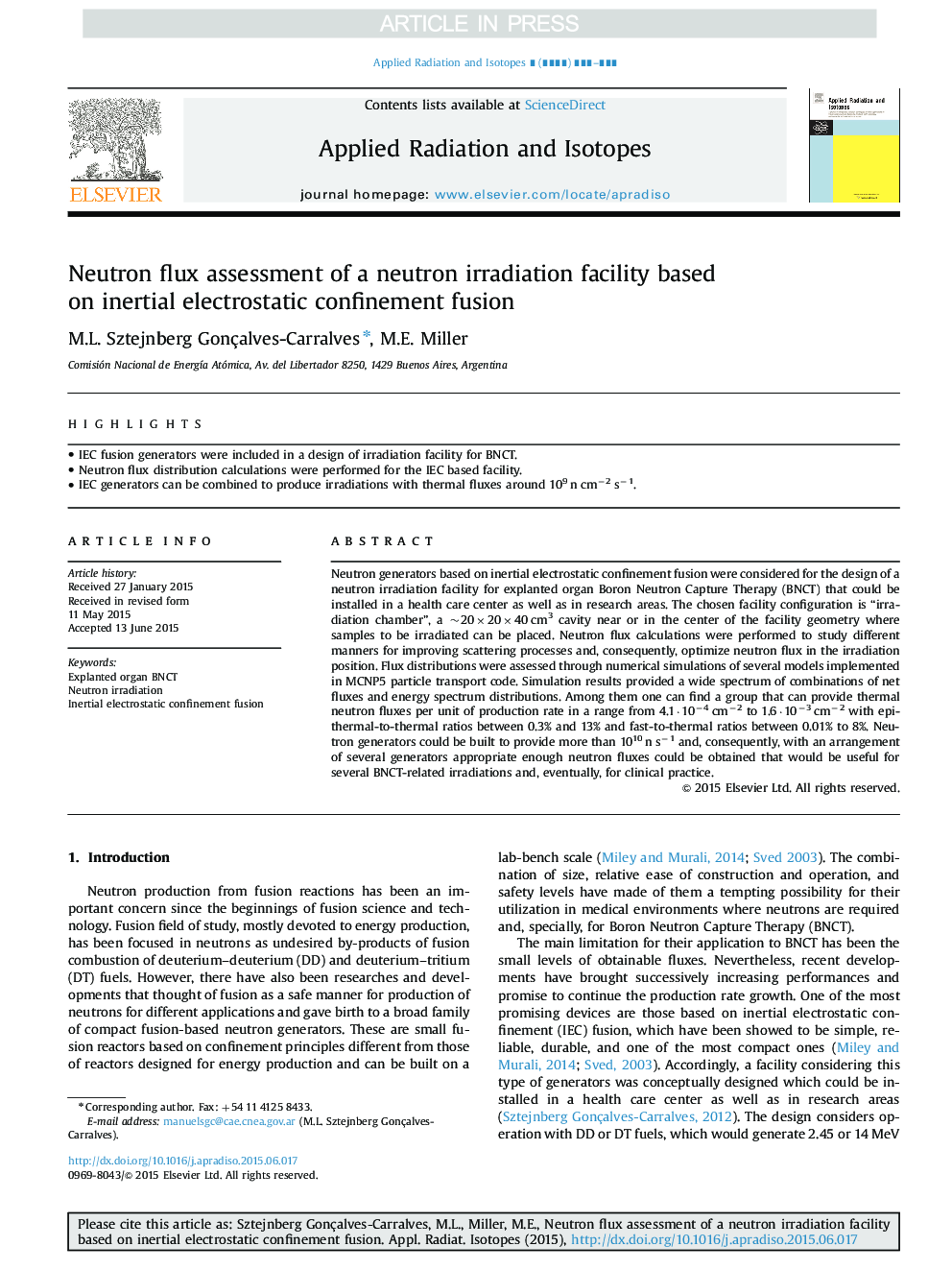| Article ID | Journal | Published Year | Pages | File Type |
|---|---|---|---|---|
| 8209500 | Applied Radiation and Isotopes | 2015 | 6 Pages |
Abstract
Neutron generators based on inertial electrostatic confinement fusion were considered for the design of a neutron irradiation facility for explanted organ Boron Neutron Capture Therapy (BNCT) that could be installed in a health care center as well as in research areas. The chosen facility configuration is “irradiation chamber”, a ~20Ã20Ã40 cm3 cavity near or in the center of the facility geometry where samples to be irradiated can be placed. Neutron flux calculations were performed to study different manners for improving scattering processes and, consequently, optimize neutron flux in the irradiation position. Flux distributions were assessed through numerical simulations of several models implemented in MCNP5 particle transport code. Simulation results provided a wide spectrum of combinations of net fluxes and energy spectrum distributions. Among them one can find a group that can provide thermal neutron fluxes per unit of production rate in a range from 4.1·10â4 cmâ2 to 1.6·10â3 cmâ2 with epithermal-to-thermal ratios between 0.3% and 13% and fast-to-thermal ratios between 0.01% to 8%. Neutron generators could be built to provide more than 1010 n sâ1 and, consequently, with an arrangement of several generators appropriate enough neutron fluxes could be obtained that would be useful for several BNCT-related irradiations and, eventually, for clinical practice.
Related Topics
Physical Sciences and Engineering
Physics and Astronomy
Radiation
Authors
M.L. Sztejnberg Gonçalves-Carralves, M.E. Miller,
